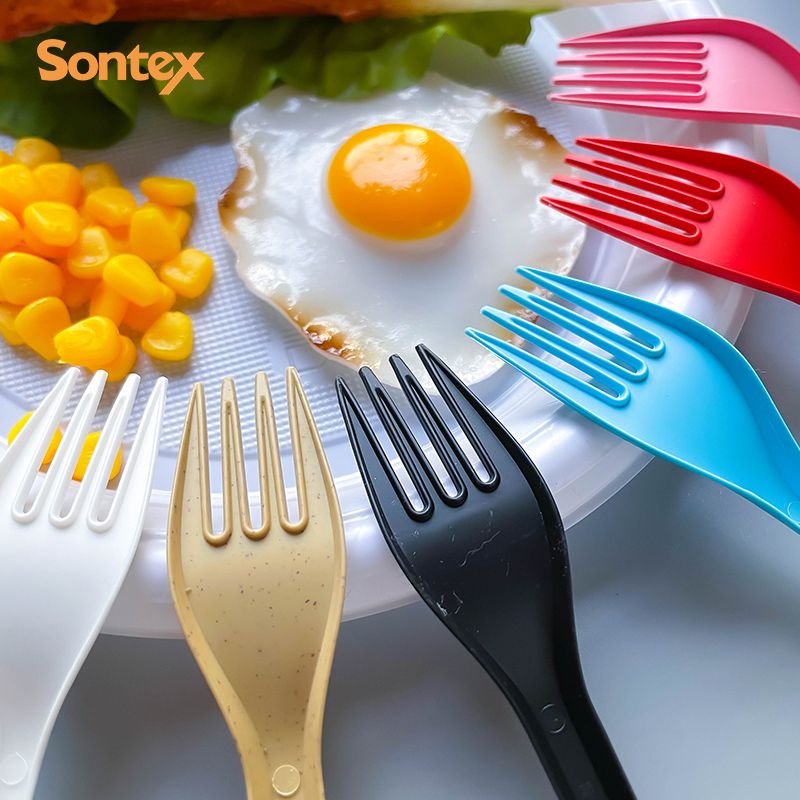A Complete Guide To Biodegradable And Compostable Utensils
Plastic utensils are losing popularity due to their harmful environmental effects. A variety of sustainable and biodegradable tableware alternatives are emerging in response. While biodegradable and compostable utensils are now widespread, it's important to recognize that they differ in their environmental impact. To make an eco-friendly choice, here's what you need to consider when selecting a pair.
With a staggering 40 billion plastic utensils ending up in landfills annually, there has been a pressing need for a low-waste alternative. Biodegradable utensils and compostable cutlery have emerged as the favored eco-friendly options. However, the environmental friendliness of these alternatives varies depending on their composition and manufacturing processes, and not all are as environmentally sound as they may appear.
Compostable Vs. Biodegradable Tableware
Frequently, the terms 'compostable' and 'biodegradable' are used interchangeably, but there is a distinct difference between the two.
Biodegradable utensils will eventually break down in the natural environment. However, this term is loosely regulated, and a 'biodegradable' utensil may take 5-10 years or even longer to decompose. There is no guarantee that so-called biodegradable tableware will break down into an environmentally safe form. In some instances, even plastic has been marketed as biodegradable. Due to the loose regulation and the confusing nature of the term, it is advisable to seek utensils that are certified as compostable.
Compostable utensils are crafted from materials designed to decompose either in a backyard composting environment, such as a compost pile, or in a commercial compost facility. To earn certification as compostable, these utensils undergo third-party testing and must completely break down into pure, healthy soil within a specified timeframe. Commercial compost facilities typically require items to decompose in 80 days or less, while the compost cycle in a home compost bin may take up to two years.
The third-party certification ensures that compostable utensils undergo a verified process of breaking down into soil within a short period, making them a more environmentally responsible choice. However, it's crucial to consider both the specific environment in which these utensils are certified to break down and their material composition when evaluating their true eco-benefits.
Further reading:
Caring for Faux Fur Blankets and Rugs
Materials Matter
PLA as the Basis for CPLA
The Ultimate Guide to Faux Fur Pillows: Style, Comfort, and Luxury
Are Limestone Tiles Durable?
Repeatedly, the term CPLA is mentioned in discussions about sustainability, yet its actual meaning remains largely unknown.
To comprehend CPLA, one must first familiarize oneself with PLA, the foundation of CPLA. PLA, short for polylactide, is a synthetic polymer derived from renewable raw materials, making it a sustainable bioplastic. Additionally, PLA is biodegradable. This polymer is sourced from starchy plants like corn or beets, where the starch is extracted and transformed into lactic acid by microorganisms such as lactic acid bacteria. Due to its robust structure, PLA finds versatile applications, serving as an inner coating for disposable coffee cups, packaging material, cutlery, or straws.
PLA Becomes CPLA
In the production of CPLA, lactic acids are infused with up to 30% talcum powder to induce crystallization. This results in a non-transparent but robust and stable granulate known as crystallized polylactic acid, abbreviated as CPLA.
CPLA exhibits enhanced heat resistance compared to its predecessor PLA, withstanding temperatures of approximately 85°C. This makes it a recommended choice for packaging hot drinks and food. Moreover, CPLA retains the compostable properties of clear PLA. With these advantages, CPLA proves to be versatile in applications such as the to-go industry and event catering, akin to its counterpart PLA.
Are Compostable Utensils Actually Compostable?
While utensils certified as compostable do break down, it's crucial to consider the specific environment required for decomposition. Some popular options, like sugarcane utensils, are only compostable in commercial compost facilities. When placed in at-home compost settings, commercially compostable utensils may not break down. Additionally, compostable utensils are not recyclable, and when discarded in landfills, commercially compostable variants can take decades or more to decompose.
Due to these factors, many compostable utensils end up in landfills, similar to plastic utensils. Consumers often face confusion regarding the proper disposal of compostable utensils, especially when those made from sugarcane closely resemble their plastic counterparts. This confusion can result in compostable utensils being mistakenly sent to recycling facilities or landfills.
For compostable utensils to truly offer an environmentally friendly alternative, it is essential to ensure they are disposed of properly. Understanding whether the utensils are commercially or backyard compostable is a crucial step in making an informed choice.
- Previous: None
- Next: None
- 0


